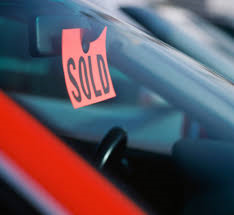The Art Of Wholesaling Used Vehicles In Today’s Market
Make no mistake, I’m a retail-first guy.
 I fundamentally believe that dealers should sell every vehicle they acquire as a retail unit to a retail customer.
I fundamentally believe that dealers should sell every vehicle they acquire as a retail unit to a retail customer.
But I also recognize that retailing every used vehicle isn’t always possible—even with the best market data, technology and tools to guide a retail exit on every car. The market’s simply too volatile, and dealership people and processes are too fallible, for dealers to get it right 100 percent of the time.
Inevitably, most dealers will need to wholesale some used vehicles to maintain their inventory turns and profitability goals. The challenge then becomes determining the best way to dispatch the vehicles most efficiently and minimize any loss.
On top of that, dealers now have a separate wholesale challenge: What’s the most efficient, least-costly way to get rid of all the high-mileage “as-is” stuff that we’re taking in on trades that we don’t want to retail?
I took both challenges to a handful of retail-first velocity dealers to get their best practice recommendations. The dealers offered the following tips, which could be dubbed, “The Art of Wholesaling Used Vehicles in Today’s Market.”
Go Online: Some dealers use online channels—DealerMatch, OpenLane, OVE, Simulcast, SmartAuction, etc.—more than physical auctions when they need to wholesale aged and “as-is” units. These channels allow dealers to offer vehicles for sale without the expense and time required to transport the vehicles to physical auctions, which they view as a last resort.
For aged units: As used vehicles hit 45 days in inventory, a Midwest dealer group posts the cars across several online auction channels. Each car still has 15 days as a retail unit (the dealer has a 60-day retail window). But each car’s presence in the online wholesale marketplace acts as a hedge against future losses if the car doesn’t retail. The dealership’s used vehicle manager says this practice eliminates roughly a third of their 45-day-plus units. “It basically takes care of itself. I don’t stress as much as I used to about aged cars, and we’ve seen a dramatic reduction in our wholesale costs and losses,” he says.
For “as-is” cars: A New York dealer started posting fresh, high-mileage trades online early this summer after he took too many lumps at the local auctions. “I’m trying to sell the same high-mileage cars as everybody else,” he says. The dealer estimates he’s able to make up $500 more per vehicle than he would taking a car to the local auction “because it’s got more eyeballs on it online than the local auction.”
Apply A Retail Mindset: Whether it’s an aged or “as-is” unit, the velocity dealers tell me they always post condition reports and photos as they wholesale their vehicles through online channels. The dealers consider their wholesale efforts akin to the way they retail cars—the more information they offer, the better. A Southeast dealer says the extra effort makes all the difference. “I’m not selling to guys running around in the lane,” he says. “I’m selling to a guy who’s at his computer for eight to 10 hours trying to figure out what cars he wants to buy. It’s like my retail customers, why wouldn’t I want to make it easier to buy my car than the next guy’s?”
(An emerging retail-style approach: Dealers are experimenting with walk-around videos as a lower-cost way to showcase wholesale vehicles online without a condition report or photos. For some wholesale buyers, the video, which includes starting up the vehicle and highlighting its good, bad and ugly characteristics, is enough evidence to give them confidence to purchase the car.)
Price them to the market. Because dealers don’t incur the expense of transporting vehicles to a physical auction, the online channels can pose a temptation to “hold out for gross” on wholesale units. The New York dealer thinks this is a no-no. “It doesn’t make any sense for me to have ‘dead money’ tied up in a car that hasn’t or won’t work for me as a retail unit,” he says. “We set our floor prices to get rid of the cars, reinvest the money and move on.”
